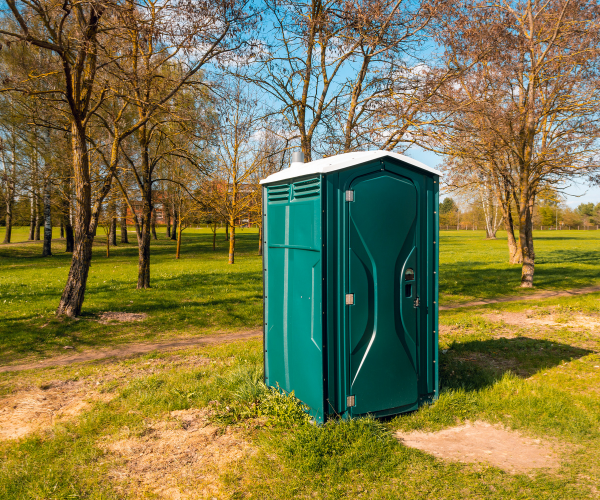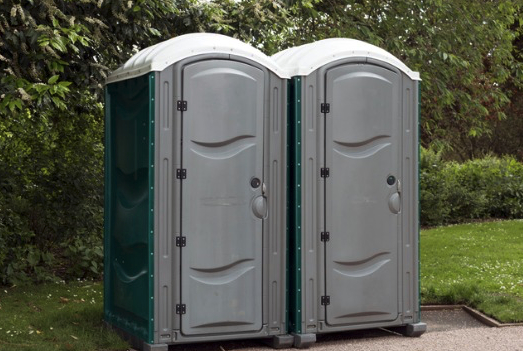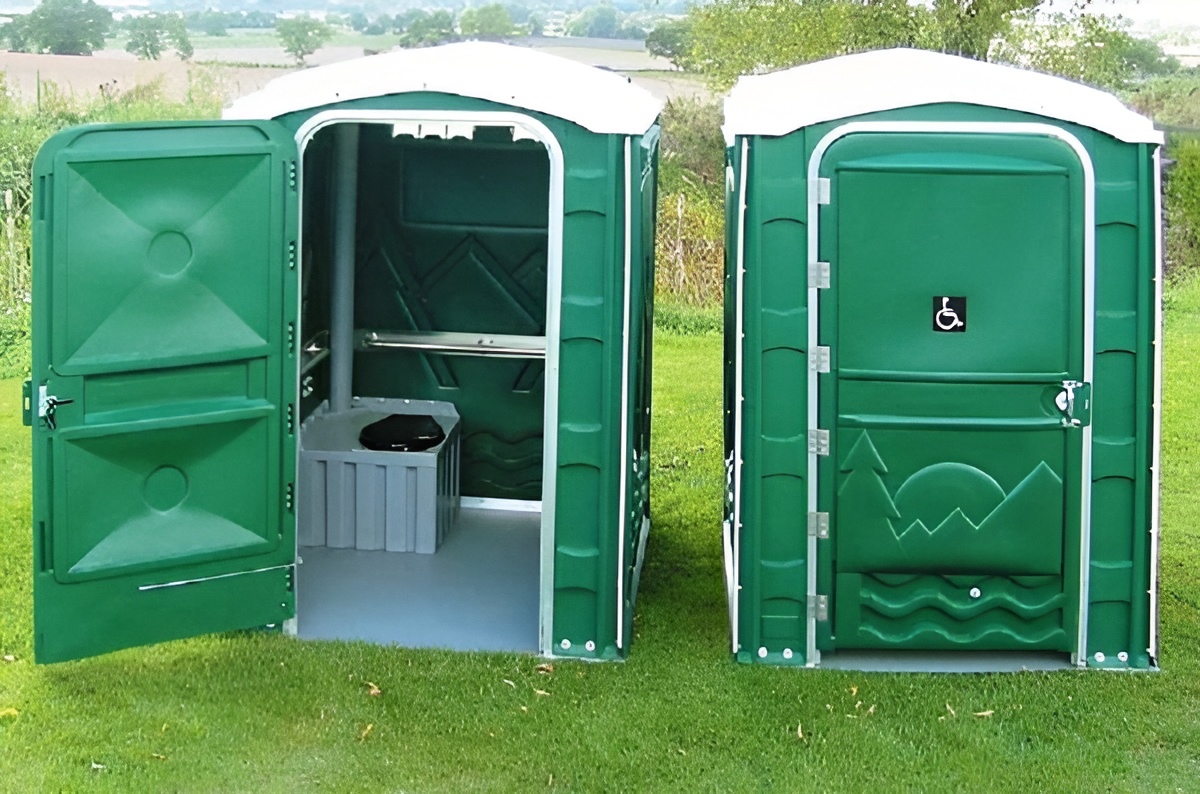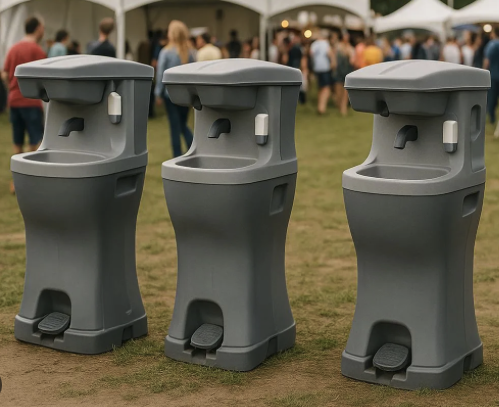Portable Toilets are intrinsically eco-friendly, designed to have minimal environmental impact. By reducing water usage compared to traditional restrooms, they contribute significantly to conservation efforts. Typically, portable restrooms use no more than 2.5 gallons per usage, which is minimal compared to traditional toilets needing up to 5 gallons per flush. This water-saving advantage is crucial, especially in regions facing shortages or where conservation is prioritized. Moreover, these portable setups often rely on green cleaning practices, using biodegradable chemicals that break down waste and minimize harmful byproducts. This system ensures that waste is managed efficiently and with minimal disturbance to the surrounding ecosystem. Furthermore, the waste from portable toilets is often taken to centralized treatment facilities where it undergoes thorough processing, ensuring compliance with environmental regulations. Another important ecological benefit of Portable Toilets is their contribution to reducing the need for permanent infrastructures in areas that are infrequently used or where temporary setups are preferred. This minimizes both the local development footprint and potential habitat disruptions for wildlife. Meanwhile, the materials and processes involved in their construction and maintenance often incorporate sustainability-focused designs. As recycling strategies continue to improve, more components of these units can be repurposed, further reducing environmental impact.From a logistical standpoint, strategically placed Portable Toilets can help disperse crowd impacts across large events, reducing localized strain in any specific area and promoting environmental protection. By selecting portable options, event planners, construction managers, and community organizers can align their operations with green practices more readily.Ultimately, embracing Portable Toilets as a sanitation solution underscores a commitment to sustainable environmental practices while ensuring that necessary human conveniences are met without compromising ecological integrity.

Portable Toilet Rentals in Meigs County
Call today for a free quote (423) 719-5081
Portable Toilet
Fast, Easy, & 100% Free To Get Started
Over 20 Years of Experience
For over 20 years, our company has delivered expert portable sanitation solutions to Meigs County. Our dedication to quality and local connections ensures we remain a trusted provider in the community.
Trusted Quality Service
We pride ourselves on delivering top-tier quality service in portable sanitation. Our clean and well-maintained units ensure customer satisfaction every time.
Fast and Reliable Delivery
Our company guarantees quick delivery whenever you need portable sanitation solutions. We prioritize your schedule, ensuring our services fit seamlessly into your plans.
Portable Toilet Solutions in Meigs County
Call for a Free Quote Today
(423) 719-5081
Our Portable Toilet services in Meigs County are reliable, affordable, and locally owned. We provide clean and dependable sanitation solutions for a variety of events. Whether you're hosting a wedding, organizing a festival, or running a construction site, our facilities are tailored to meet your needs. Serving not just Meigs County but also surrounding areas, we ensure every client receives personal attention with prompt service. Trust us for your portable sanitation needs and experience the difference our commitment to quality makes.


Standard Portable ToiletOur standard porta john rental units are durable and reliable for any commercial build site, housing development, public works project, or remodel job.Features include dome lighting, grated floors, and an “In-Use” locking mechanism for privacy and comfort.Regularly maintained, inspected, and cleaned by FusionSite at your location.

Wheelchair Accessible RestroomsDeveloped as an alternative to full ADA-compliant restrooms, the Liberty is a spacious, wheelchair-accessible unit that can also be promoted as a family-sized restroom.Includes a patented flat-floor system for easy wheelchair access and maneuverability.Handrails, paper holder, and rotary latch are designed for simple, intuitive end-user operation.

Portable SinkPortable hand washing stations are essential for keeping your work site sanitary and clean.Features hands-free foot pumps, liquid soap, and paper towels.Perfect for job sites without water hookups, these units can handle hundreds of washes between services.
We Proudly Serve
Standard Portable Toilets
Our Standard Portable Toilets provide clean and affordable sanitation solutions across Tennessee with dependable service.
High Rise Portable Toilets
High Rise Portable Toilets cater to elevated construction sites, offering reliable sanitation in Meigs County.
Restroom Trailers
Restroom Trailers in Meigs County by The Bolles Co offer a luxurious portable experience for special events.
Roll off Dumpsters
Roll off Dumpsters by The Bolles Co provide waste management solutions in Meigs County, ensuring a clean environment.
Septic Tank Cleaning
Septic Tank Cleaning at The Bolles Co in Tennessee ensures efficient and reliable waste maintenance services.
Grease Trap Cleaning
Grease Trap Cleaning in Meigs County, Tennessee, keeps your operations running smoothly with our expert services.
Fencing & Barricades
Fencing & Barricades by The Bolles Co serve Tennessee with secure and flexible site management solutions.
Residential Storage
Residential Storage in Meigs County offers secure, convenient solutions for your storage needs.
Meigs County Portable Sanitation Solutions
Renting a Portable Toilet has never been easier or more convenient with our seamless quote and delivery process. Simply click the 'Get A Quote' button found on various pages on our website, or fill out the quick form located at both the top and bottom of our page. This form requires basic information like your first name, last name, phone number, and email. From there, our efficient team reviews your request promptly to provide feedback on pricing and availability.Understanding the importance of timely delivery is key, especially for time-sensitive projects or events. Once your order is confirmed, we ensure delivery at your specified venue as we schedule a time that works for you. Whether it's a large event or a small construction site, our delivery service is streamlined for efficiency and precision. Our knowledgeable drivers are equipped with GPS and follow planned routes to make sure that we meet your timeline expectations.The delivery of our portable toilets isn't just about getting them on site. We ensure they are placed where needed while adhering to any specific instructions or preferences you may have provided upon ordering. Additionally, our comprehensive service includes setup and adequate sanitation support to help your event or site run smoothly without interruption.We pride ourselves on delivering not only a product but an entire service that is committed to excellence with each interaction. Trust us to make the logistics of portable toilet delivery stress-free, leaving you with the peace of mind to focus on running your event or worksite.

Our Portable Toilet services bring added comfort and cleanliness to the beautiful landscape of Meigs County. Whether you're visiting the Meigs County Fair or participating in the engaging events at the Tennessee Valley Theatre, our portable units enhance the area's local charm and attractions. Their presence at such events ensures that both organizers and attendees experience uninterrupted enjoyment. Community events in Meigs County stand out not only for their vibrant energy but for their strong connection with nature. Portable toilets by The Bolles Co are designed to complement this natural setting, blending seamlessly into the well-loved nature spots and outdoor venues across the county. Meigs County's unique mix of outdoor activities is complemented by our top-of-the-line sanitation services, providing peace of mind through convenience and cleanliness. As a trusted name in the area, our portable solutions cater to any occasion, allowing guests to enjoy every moment without worry. Our commitment to quality ensures no detail is overlooked, affirming that our service remains the best choice for the community's diverse needs. With our units present at local attractions, nature really becomes the perfect backdrop for any gathering. Trust us to provide reliable and pristine service in scenic Meigs County, making your event not only enjoyable but environmentally conscious.
When you're looking for a portable toilet service in Meigs County, look no further than The Bolles Co. Our commitment to the community makes us a standout choice, ensuring reliable and personalized service. As a local leader, our experience and dedication bring convenience and cleanliness to every event or project.We excel in providing tailored solutions, meeting specific needs with an attentive touch. Our team's local expertise guarantees quick responses and knowledgeable support for your event's distinct requirements. With us, you receive not only a service but a partner dedicated to helping make your event a success.The trust we've earned stems from our focus on cultivating strong community relationships, offering a level of customization and flexibility unavailable elsewhere. Select us for your portable sanitation needs and rely on our unwavering commitment to excellence.
Our company stands by a commitment to deliver fast and reliable Portable Toilet services, understanding the critical nature of timely sanitation solutions for events and projects. From the moment an order is placed, our efficient logistics team springs into action, meticulously planning to meet your specified schedule.Every delivery is carried out by skilled drivers familiar with Meigs County's routes and destinations, guaranteeing swift transit and punctual arrival. Our reliable timing allows planners to focus on the event itself, without any concerns about sanitation arrangements.In addition to speed, our thorough delivery approach ensures units are installed and ready for immediate use upon arrival. This proactive service model has made us a preferred provider, consistently proving that our pledges of fast, dependable service translate into real-world efficiency.
Learn More About Our Portable Toilet in Meigs County
Renting a Portable Toilet in Meigs County is a straightforward process tailored to ensure ease and speed. Interested customers can start by accessing our website, where several 'Get A Quote' buttons are prominently displayed across the pages. This option is designed for customer convenience, offering a direct route to submitting rental inquiries swiftly.In addition, potential clients can find our contact form available at both the top and bottom sections of the website. Completing this form requires basic information like your first name, last name, phone number, and email address. This streamlined design ensures the form aligns closely with individual privacy needs while maintaining relevant points of contact information.Once the form or quote request has been submitted, our team rigorously assesses the specifics associated with your rental request. Factors such as delivery timelines, unit specifications, and location setup are reviewed to provide accurate feedback and pricing tailored to meet your goals. Our efficient processing system assures that once initiated, the quotation and reservation steps are concluded with minimum delay.This comprehensive renting strategy underscores our dedication to exceptional customer service, combining innovative online systems with proactive client interaction. As soon as your rental request is confirmed, our team builds a direct link with the client to manage the delivery scheduling, unit specifications, or any individual customization requested.By prioritizing customer experiences alongside service excellence, we ensure that our rental procedure not only meets customer needs swiftly and securely but stands as a pillar of trusted operations throughout Meigs County. Choosing our services means embracing portable cleanliness with a partner dedicated to streamlined convenience and transparent cooperation.
The typical delivery timeframe for a Portable Toilet order varies depending on several factors such as demand surge during peak seasons, specific necessities of event size, or the scheduling intricacies of ongoing construction projects. Nonetheless, we place a high priority on maintaining a swift and predictable delivery schedule to better align with our client's needs.Once an order is confirmed, our team utilizes a robust logistics framework that capitalizes on familiarity with Meigs County's geography. This knowledge aids in charting precise delivery routes, resulting in minimized transit times and assured punctuality on arrival dates. Customers can expect delivery within 24 to 48 hours for standard orders, although we also readily accommodate expedited requests adjusted to cater for urgent needs.The synergy between our transportation wing and customer service unit ensures transparent communication flowing throughout the project lifecycle, providing updates and personal assistance. This communication system acts as a primary point of reference for monitoring order progress, adjusting as required to reflect any emerging preferences.Beyond merely adhering to delivery timelines, we uphold a commitment to achieving unparalleled customer satisfaction through active customization and flexibility. Once the unit arrives on location, our professional delivery staff handle the coordination and setup, guaranteeing that each portable toilet unit is situated for optimal accessibility and functionality.Such reliability reinforces our trustworthiness and helps cultivate long-standing relationships within the communities of Meigs County. By maintaining an ever-responsive delivery protocol, we ensure that every customer's experience aligns with a lasting standard of excellence.Ultimately, our firm commitment to remarkable service is anchored alongside an unwavering focus on timely fulfillment; this makes us well-prepared to meet any demand promptly and satisfactorily.
Yes, we can support various event types and construction services with our comprehensive portable sanitation solutions. We cater to a wide array of events including festivals, sporting events, weddings, corporate gatherings, family reunions, and any other special occasions requiring reliable amenities. Our offerings include luxury restroom trailers, porta potties, roll-off dumpsters, fencing, barricades, holding tanks, ADA-compliant units, portable sinks, and hand sanitizer stations, all tailored to fit specific project or event requirements. Regardless of scale or setting, our team is prepared to deliver not only the units but an exceptional service experience ensuring convenience and satisfaction.Whether handling peak demand days for large outdoor festivals or structuring sanitary solutions for long-term construction worksites, our expansive product catalog guarantees that each setup is tailored toward ensuring attendee comfort while maintaining a clean and efficient environment. Our specialties extend into logistical excellence where delivery schedule precision and unit placement strategy are plotted to adorn facility functionality. By engaging with our dynamic range of services, organizers can confidently elevate their happenings in a secure and accommodating atmosphere, Upholding the dignity and reputation of every event or construction footprint.Our adaptability to various service scopes coupled with attentive customer support fortifies our position as an industry leader. Offering robust and scalable solutions, we assure a hassle-free experience, making every sponsored event manageable and unforgettable for everyone involved.Choose our portable sanitation services today for a partner that brings peace of mind, no matter the occasion. Our commitment to quality ensures an exceptional experience with every interaction.

